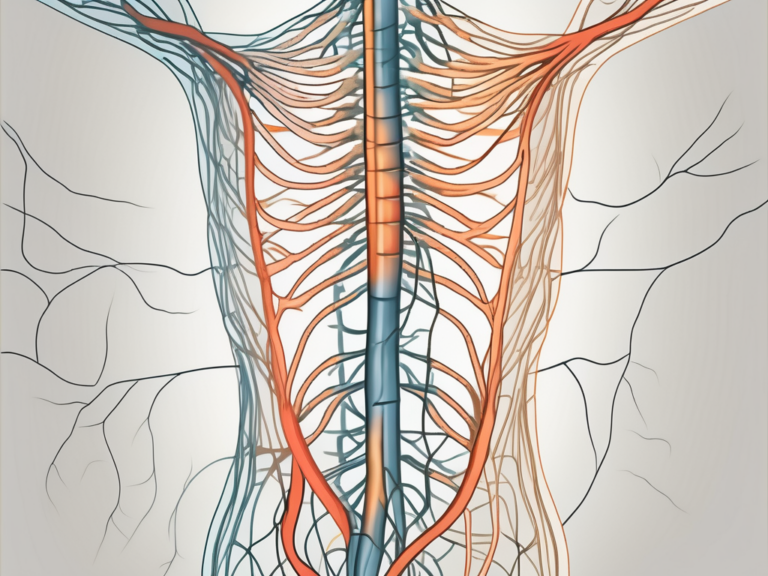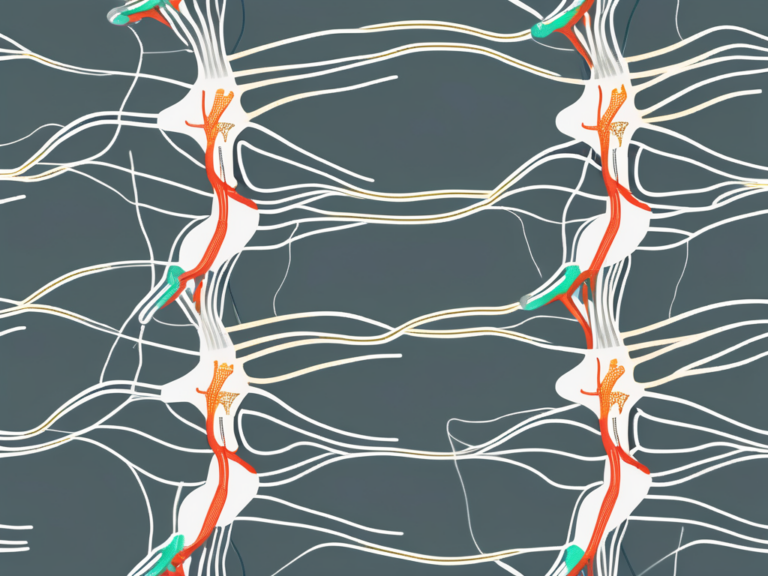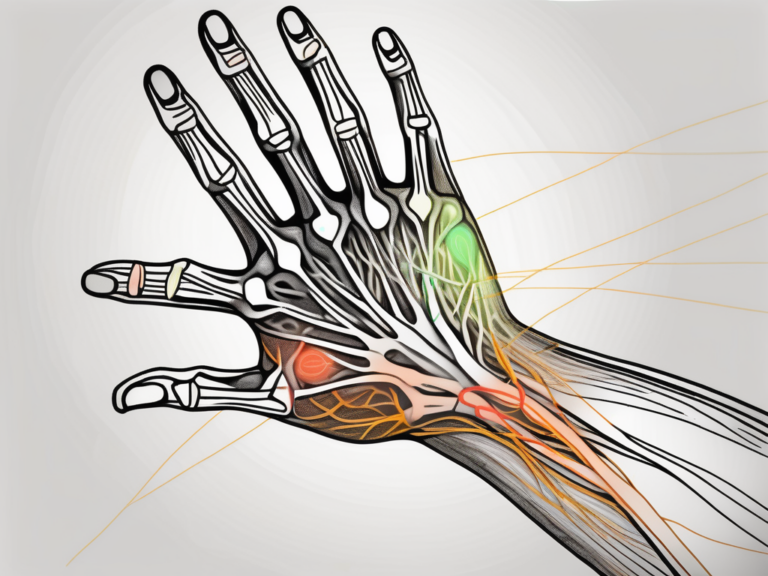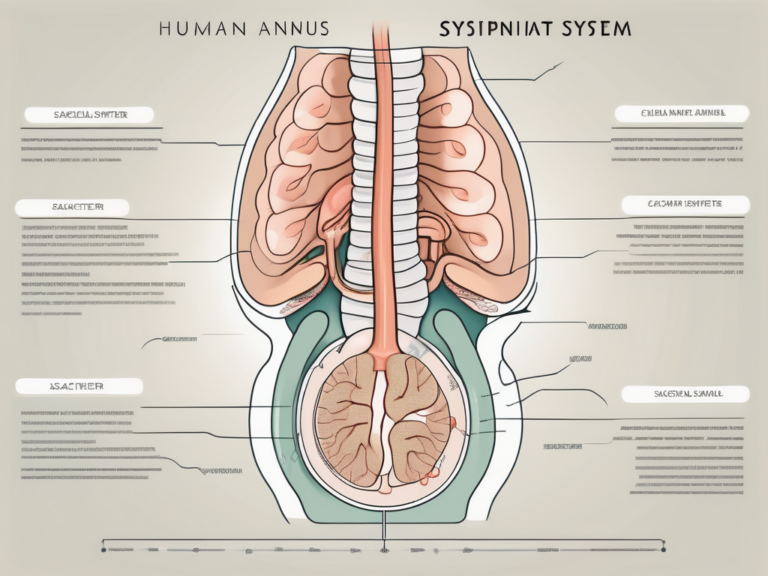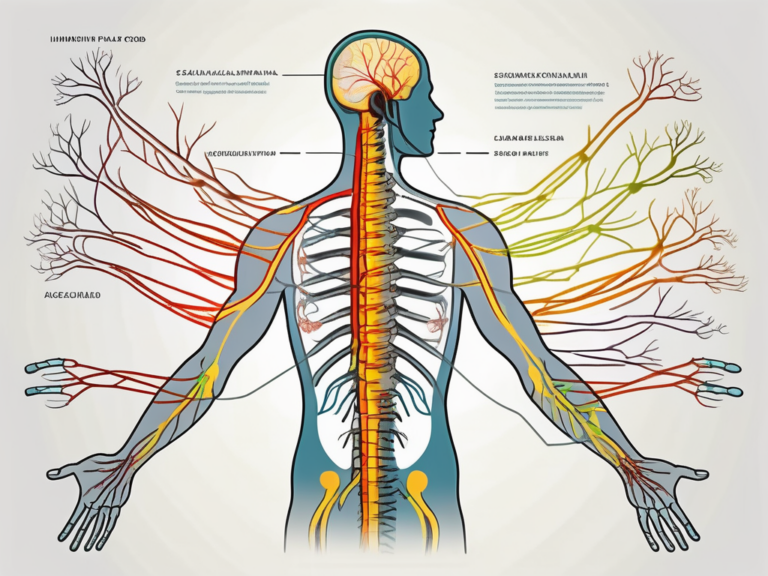Which Spinal Segment Does the First Sacral Nerve Arise From?
The spinal cord is a vital component of the human nervous system, responsible for transmitting sensory and motor signals between the body and the brain. It consists of a complex network of nerves that emerge from specific spinal segments. The first sacral nerve, one of the major nerves in the lower back region, plays a crucial role in the functioning of the lower body. In this article, we will delve into the intricate relationship between the spinal segment and the first sacral nerve, shedding light on its origin, pathway, and associated disorders.
Understanding the Spinal Cord Structure
Before we explore the specifics of the first sacral nerve, let’s take a closer look at the structure of the spinal cord. The spinal cord is an incredibly intricate and vital part of the central nervous system. It is a long, cylindrical bundle of nerve fibers and tissues that extends from the base of the brain down to the lower back. The spinal cord is divided into several segments, with each segment corresponding to a specific region of the body. These segments, numbered and labeled, align with different vertebrae in the spinal column.
Within the spinal cord, there are two main types of nerve fibers: sensory and motor. Sensory fibers transmit information from the body’s periphery, such as touch, pain, and temperature, to the brain. Motor fibers, on the other hand, carry signals from the brain to the muscles, allowing for voluntary movements. The spinal cord acts as a conduit for these neural signals, facilitating communication between the brain and various parts of the body.
The Role of the Spinal Cord in the Nervous System
The spinal cord plays a crucial role in the functioning of the nervous system. It serves as a vital link between the brain and the rest of the body, relaying important information back and forth. Without the spinal cord, our ability to move, sense, and respond to the world around us would be severely impaired.
One of the primary functions of the spinal cord is to relay sensory information from the peripheral nerves to the brain. For example, when you touch a hot stove, sensory receptors in your skin send signals to the spinal cord, which then quickly transmits the information to the brain. This rapid communication allows you to perceive pain and withdraw your hand before sustaining further injury.
In addition to sensory information, the spinal cord also carries motor signals from the brain to the muscles. This enables us to perform voluntary movements, such as walking, running, and grasping objects. When you decide to move your arm, for instance, the brain sends signals down the spinal cord to the appropriate muscles, initiating the desired action.
The Different Segments of the Spinal Cord
Now that we have a better understanding of the spinal cord’s role in the nervous system, let’s delve into the different segments that make up this complex structure. There are a total of 31 pairs of spinal nerves that emerge from the spinal cord, each originating from a specific segment. These segments are further categorized into five regions: cervical, thoracic, lumbar, sacral, and coccygeal.
The cervical region, located in the neck area, consists of eight spinal segments. These segments are responsible for transmitting signals to and from the upper body, including the neck, shoulders, arms, and hands. The thoracic region, which comprises twelve segments, serves the middle and upper back, as well as the chest and abdomen.
Moving further down the spinal cord, we encounter the lumbar region, which consists of five segments. The lumbar region is responsible for transmitting signals to and from the lower back, hips, and legs. Next, we have the sacral region, which is made up of five segments and is situated in the pelvic area. The sacral region plays a crucial role in transmitting signals to and from the pelvis, genitals, and lower limbs.
Lastly, we have the coccygeal region, which is the smallest and final segment of the spinal cord. It consists of a single pair of spinal nerves and is responsible for transmitting signals to and from the tailbone area.
Each segment of the spinal cord is essential for the proper functioning of the body. They work in harmony to ensure that sensory information is relayed accurately to the brain and that motor signals are transmitted efficiently to the muscles, allowing for coordinated movements.
The Sacral Nerves: An Overview
Now that we have a basic understanding of the spinal cord, let’s dive into the sacral nerves in particular. The sacral nerves are a group of nerves that arise from the sacral segment of the spinal cord. They play a crucial role in the functioning of various organs and muscles in the lower body.
The sacral nerves, also known as the sacral plexus, are an intricate network of nerves that originate from the spinal cord’s sacral region. This region is located in the lower back, just below the lumbar vertebrae. The sacral nerves are part of the peripheral nervous system, which connects the central nervous system to the rest of the body.
These nerves are essential for transmitting signals between the brain and the lower body. They carry both motor and sensory information, allowing us to move our legs, control our bladder and bowel functions, and perceive sensations in the lower body.
The Function of Sacral Nerves in the Body
The sacral nerves are responsible for controlling the muscles in the lower back, buttocks, groin, and legs. They facilitate movement, coordination, and sensory perception in the lower body. These nerves play a vital role in maintaining balance and stability while walking or engaging in any physical activity.
Motor neurons within the sacral nerves innervate the muscles in the lower body, enabling us to perform complex movements such as walking, running, and jumping. These nerves provide the necessary signals for muscle contraction and relaxation, ensuring smooth and coordinated movements.
In addition to motor function, the sacral nerves also carry sensory information from the lower body to the brain. They transmit sensations of touch, pain, temperature, and proprioception, allowing us to perceive our surroundings and react accordingly. Without these nerves, our ability to feel sensations in the lower body would be compromised.
Dysfunction or damage to these nerves can lead to a range of symptoms and complications. Conditions such as sacral nerve compression, nerve entrapment, or nerve damage can result in pain, weakness, numbness, and loss of function in the lower body. It is crucial to maintain the health and integrity of the sacral nerves to ensure optimal functioning of the lower body.
The Anatomy of Sacral Nerves
The sacral nerves emerge from the spinal cord and form a bundle called the cauda equina. The term “cauda equina” translates to “horse’s tail” in Latin, aptly describing the appearance of the nerve roots as they extend downwards from the spinal cord.
As the sacral nerves exit the spinal cord, they travel through the vertebral canal and then branch out to innervate different regions of the lower body. These branches extend to various structures, including the bladder, rectum, reproductive organs, hips, and lower extremities.
The sacral nerves provide motor innervation to the muscles in the lower back, buttocks, and legs. They control the movement of these muscles, allowing us to perform activities such as standing, walking, and sitting. Additionally, these nerves also regulate the function of the pelvic organs, including the bladder, bowel, and sexual organs.
Each sacral nerve carries both motor and sensory fibers. Motor fibers transmit signals from the brain to the muscles, while sensory fibers transmit signals from the sensory receptors in the lower body to the brain. This bidirectional communication ensures proper coordination and functioning of the lower body.
In conclusion, the sacral nerves are a vital component of the nervous system, responsible for controlling and coordinating various functions in the lower body. Understanding their anatomy and function is crucial for diagnosing and treating conditions that affect these nerves, ensuring optimal health and well-being.
The First Sacral Nerve: Origin and Pathway
Now that we have established the importance of the sacral nerves, let’s shift our focus to the first sacral nerve specifically. Understanding its origin and pathway within the body is crucial to grasp its significance in overall neurological function.
The Specific Segment from which the First Sacral Nerve Arises
The first sacral nerve emerges from the first sacral segment of the spinal cord. This segment, also known as S1, is located just below the lumbar vertebrae. It is here that the nerve fibers of the first sacral nerve originate, ready to carry out their vital functions.
As one of the major nerves in the sacral plexus, the first sacral nerve plays a pivotal role in transmitting signals that control muscle movement and sensation in the lower back, buttocks, and legs. It is responsible for relaying sensory information from the skin, muscles, and joints of these areas to the brain, allowing us to perceive touch, pain, and temperature accurately.
Furthermore, the first sacral nerve also carries motor signals from the brain to the muscles in the lower extremities, enabling us to perform various movements such as walking, running, and jumping. Without the proper functioning of this nerve, these essential activities would be severely impaired.
Dysfunction or damage to the first sacral nerve can result in various symptoms and conditions. For instance, compression of the nerve due to a herniated disc or spinal stenosis can lead to pain, weakness, and numbness in the lower back, buttocks, and legs. Additionally, conditions like sciatica, which is characterized by radiating pain along the path of the nerve, can also be attributed to the first sacral nerve.
The Journey of the First Sacral Nerve through the Body
After its origin at the first sacral segment, the first sacral nerve embarks on an intricate journey through the body. It travels through the pelvic region, branching out to innervate the muscles and organs of the lower body.
As it navigates through the pelvis, the first sacral nerve sends branches to various muscles, including the gluteus maximus, piriformis, and quadratus femoris. These muscles play a crucial role in stabilizing the pelvis and facilitating movements such as walking and running.
In addition to its role in muscle control, the first sacral nerve also provides sensory innervation to the pelvic organs. It carries sensory information from the bladder, rectum, and reproductive organs, allowing us to perceive sensations like fullness, pressure, and pain in these areas.
The intricate pathway of the first sacral nerve ensures that the neurological communication between the brain and the lower extremities remains intact. It forms connections with other nerves in the sacral plexus, such as the superior gluteal nerve and the inferior gluteal nerve, to coordinate and regulate the complex movements of the lower body.
In conclusion, the first sacral nerve is a vital component of the sacral plexus, responsible for transmitting signals that control muscle movement and sensation in the lower back, buttocks, and legs. Its origin at the first sacral segment and its intricate pathway through the body highlight its significance in overall neurological function. Understanding the complexities of this nerve can provide valuable insights into the diagnosis and treatment of various neurological conditions.
The Relationship between the Spinal Segment and Sacral Nerves
Understanding the relationship between the spinal segment and the sacral nerves is crucial in comprehending the impact of spinal health on overall nerve function.
The spinal segment, consisting of a vertebra and the associated spinal nerves, plays a vital role in transmitting signals between the brain and the rest of the body. The sacral nerves, specifically, originate from the lower part of the spinal cord and extend down to the sacrum, a triangular bone located at the base of the spine.
How Spinal Segments Influence Sacral Nerve Function
Any disruption or injury to a specific spinal segment can affect the function of the corresponding sacral nerve. The spinal nerves are responsible for relaying sensory information, such as touch, temperature, and pain, from various parts of the body to the brain. They also transmit motor signals from the brain to the muscles, enabling movement and coordination.
When a spinal segment is compromised, whether due to trauma, degenerative conditions, or other factors, the communication between the brain and the sacral nerves may be disrupted. This can lead to various complications such as muscle weakness, loss of sensation, or dysfunction in the organs and tissues innervated by these nerves.
Maintaining proper spinal health is therefore essential for supporting optimal sacral nerve function. Regular exercise, proper posture, and avoiding activities that put excessive strain on the spine can help prevent spinal segment issues and promote overall nerve health.
The Impact of Spinal Health on Sacral Nerves
Spinal health has a direct impact on the well-being of the sacral nerves. Conditions such as herniated discs, spinal stenosis, or degenerative diseases can compress or damage the nerves, leading to pain, weakness, and other neurological symptoms.
For example, a herniated disc occurs when the soft cushioning material between the vertebrae slips out of place and presses against the spinal nerves. This compression can result in radiating pain, numbness, or tingling sensations in the lower back, buttocks, and legs.
Similarly, spinal stenosis, a condition characterized by the narrowing of the spinal canal, can put pressure on the sacral nerves, causing symptoms such as leg pain, difficulty walking, and bladder or bowel dysfunction.
It is crucial to recognize and address any spinal-related issues to ensure the optimal function of the first sacral nerve and overall nerve health. Seeking medical attention, undergoing physical therapy, or considering surgical interventions, if necessary, can help alleviate symptoms and improve the quality of life for individuals affected by spinal segment and sacral nerve problems.
Common Disorders Related to the First Sacral Nerve
Now that we understand the significance of the first sacral nerve, let’s explore some common disorders that can affect its functioning.
Symptoms and Diagnosis of Sacral Nerve Disorders
Disorders related to the first sacral nerve can present with various symptoms, including pain, numbness, muscle weakness, and difficulty with bowel or bladder control. Diagnosing these conditions often involves a comprehensive medical evaluation, including a thorough medical history, physical examination, and diagnostic tests such as imaging studies or nerve conduction studies.
Treatment Options for Sacral Nerve Disorders
The treatment of sacral nerve disorders depends on the underlying cause and severity of the condition. It may include a combination of conservative approaches, such as physical therapy, pain management, or medication. In some cases, surgical interventions may be necessary to alleviate compression or repair damaged nerves. It is crucial to consult with a healthcare professional to receive an accurate diagnosis and discuss appropriate treatment options.
The Importance of Understanding Spinal Segments and Sacral Nerves
Understanding the intricate relationship between spinal segments and the first sacral nerve is crucial for both medical professionals and patients alike.
The Role of this Knowledge in Medical Practice
Medical professionals rely on their understanding of spinal segments and sacral nerves to diagnose and treat various neurological conditions. This knowledge allows them to develop targeted treatment plans that address the underlying cause and promote optimal nerve functioning. Patients can also benefit from this understanding by actively participating in their healthcare decisions and making informed choices about their well-being.
Future Research Directions in Spinal and Sacral Nerve Study
Ongoing research in the field of spinal and sacral nerve study continues to expand our understanding of the intricate relationship between these structures. Future studies may shed light on more effective diagnostic techniques, treatment modalities, and preventive measures. The advancement of this knowledge holds promising potential for improving the quality of life for individuals with sacral nerve disorders.
In conclusion, the first sacral nerve arises from the first sacral segment of the spinal cord. This nerve plays a crucial role in the proper functioning of the lower back, buttocks, and legs. Understanding the relationship between spinal segments and the first sacral nerve is vital in comprehending the impact of spinal health on overall nerve function. Further exploration of common disorders related to the first sacral nerve and advancements in research will continue to enhance our knowledge and treatment options. If you suspect any issues related to the first sacral nerve, it is essential to consult a healthcare professional for accurate diagnosis and appropriate treatment.

